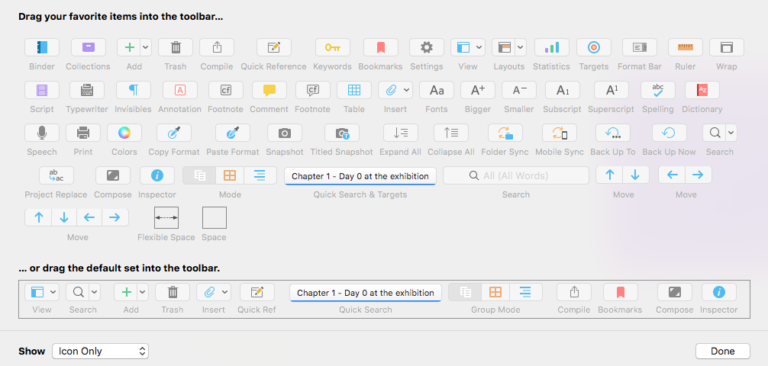

It has some awesome meta-data options so you can keep track of your work Once you know where you’re heading with your scene, you can jump straight into “composition” mode, which clears away all the clutter of your screen and allows you to focus on just writing. Split screen mode is awesome when you’ve written out a long-winded plot outline and now you’re trying to write it up as creatively as possible, whilst still hitting all the tick boxes you need to make your scene really pop. You can write in split-screen as well as full-screen composer mode Weiland on why you shouldn’t make word count your be-all and end-all.) 4. Not only this, it allows you to set word goals for your outline and watch the little blue line creep up to it before it turns green and gives you the visual equivalent of a pat on the back. You can stick all your ideas down into handy little boxes and then drag and drop them around at will, with a lot less cutting, sticking and overall mess than if you were to do it with post-it notes. The corkboard feature is awesome if you’re in the first stages of planning out your novel. So if you’re anything like me and your writing looks like a cut-and-paste job that would rival Frankenstein, don’t worry.
#Book icons scrivener windows version full#
It does it for e-books, full novel-length manuscripts, scripts, screenplays and more. In Word, you’d have to go through, change all the formatting, sort out the line spacing, change the font to Times or Courier, make sure you have your headers, your word count…Īnd not just for short stories, either. I didn’t appreciate how beautiful this feature was until it came to submitting my first short story for publication. If there’s a feature that I need that Scrivener doesn’t have, I’m yet to find it. It lets you drag and drop images straight from Google (great for the research phase) and it backs it all up to your Cloud, G Drive or Dropbox, so you never have to worry about losing all your work. HUGE bonus if you’re anything like me and delete a paragraph only to realise you need it two scenes later.) Its templates give you everything in one place: setting cards, character cards, research sections, notes sections, trash sections (which it doesn’t delete, either. Scrivener is like the swiss army knife of writing platforms. A novice.įast forward three years and I’ve got maybe nine short stories, one full novel and the bones of a trilogy under my belt and I can honestly say: I would never go back to not having Scrivener. And here’s why: 1. So this time I Googled it and I thought gosh no, that looks complicated.

I would, at the very least, have an idea of who my characters were before beginning to write.Īnd my friend suggested I look at Scrivener.

So this time I decided I was going to do it properly and. And all I needed for that was Notes, occasionally Microsoft Word, and a metric shit-tonne of tea.Īnd if your goal is just to write words, then a standard word processor is absolutely fine.īut by the time NaNo 2015 came around, I had a new goal.ĥ0k words are all well and good, but if those words aren’t forming a coherent narrative, what’s the point? In fact, most of them were utterly terrible words strung together into even worse sentences.īut that was my 2014 goal. Like, ever and my only goal was to see if I could write 50k words.

I saw it and I thought to myself: what the hell is that? Didn’t Google it, didn’t click on it, and I forgot all about it.īut back in 2014, I was writing using the notes section on my iPhone and iPad.
#Book icons scrivener windows version code#
When I was doing NaNoWriMo back in 2014, they had a discount code for Scrivener.


 0 kommentar(er)
0 kommentar(er)
